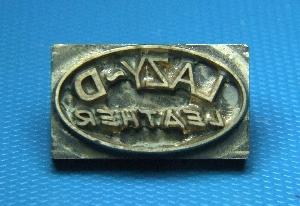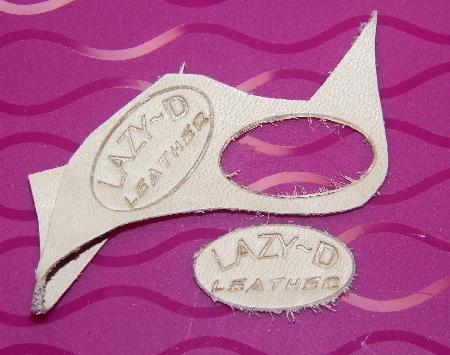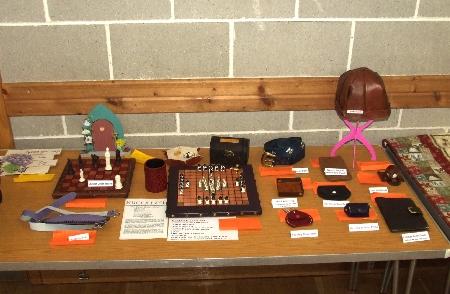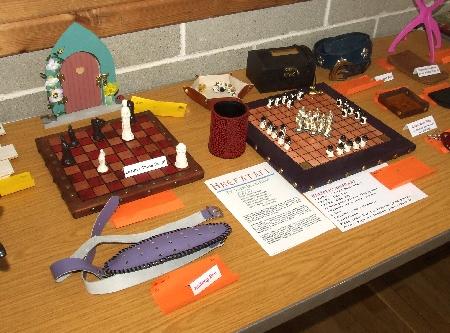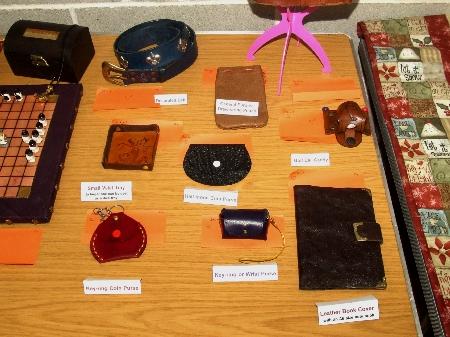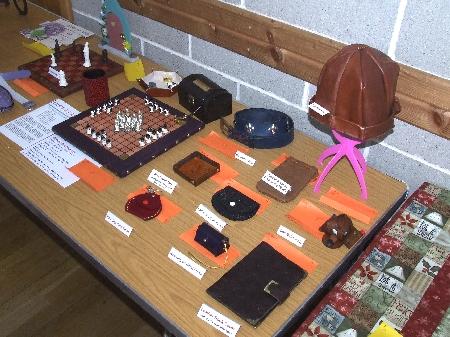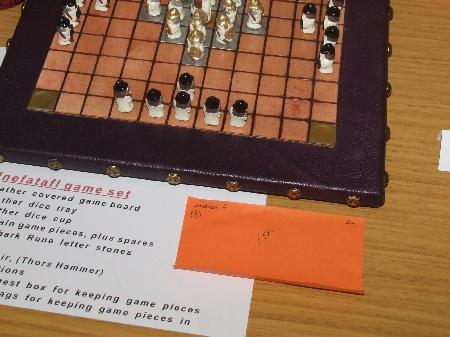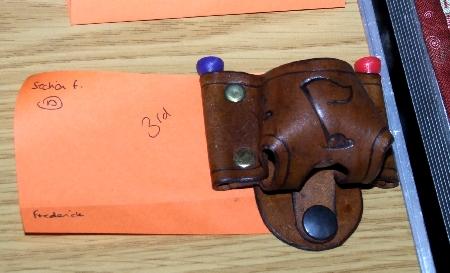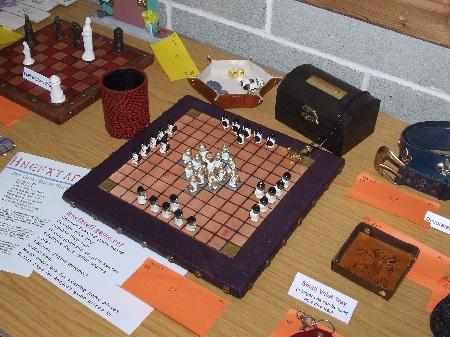-
Posts
5,931 -
Joined
Content Type
Profiles
Forums
Events
Blogs
Gallery
Everything posted by fredk
-

Balenciaga selling ‘most expensive trash bag in the world’
fredk replied to Johanna's topic in Leatherwork Conversation
Some folk will buy it KNC Syndrome Anyone remember the leather American style lunch bag a few years ago? Based on the standard paper lunch bag as used by 90% of US moms to put kiddies lunches in but made in leather for executives. That was selling in the $150 - $500 range -
Not necessarily. HMRC is a law unto themselves. They'll add any postage paid to your goods order and will charge you import duty plus 20% on top of that, irrespective of the value of the order, i.e. it won't matter if its below the £135 or not. Then the courier will add a fee of between £10 and £25 on top of that for paying the customs fees on your behalf OR. . . a small parcel might just escape their notice and you'll not be charged at all. (info acquired on a modelling forum; buyers experiences of buying models from Japan)
-
You don't say where you are but a working 99k can be picked up for as low as £25. About £50 - £80 is average, £125 plus for a serviced one from a s/m dealer. I got a mint, low used, fully serviced one with a 1 year guarantee and 1 year of servicing for about £200
-
Yes, look carefully at the size & colour example bottom left. You can just make out the nicks on the tube. Having seen that, look at the smallest gold and nickel ones and you can just make out the nicks http://www.leprevo.co.uk/photos/eyelet.html
-
Le Prevo is closed until August 15th The smallest sail eyelet is 5mm i/d The 4mm listed are not the ones you want http://www.leprevo.co.uk/eyelets.htm
-
I've used a Singer 99k with a roller foot attached. No other add-ons or adjustments, Sewed a 2mm leather wallet and will do soft very thin leather
-
Try these, the larger holes on these might do your job https://www.tandyleather.world/products/hand-sewing-leather-punch?_pos=4&_sid=83253a55d&_ss=r You can buy these for a lot less than that price. The last pair I bought just about 2 months ago cost about me £11 ($13.50 approx). And they are worth every penny of that
-

What projects can I do with 5/6 oz leather?
fredk replied to BigLeatherVic's topic in Leatherwork Conversation
Its an ideal thickness for making ladies over-shoulder carry handbags -
My preferred method is to wet the leather, not too much but thoroughly, then apply multiple coats of thinned dye
-
I would think that is a water-slide decal/transfer
-
btw, that belt that took 3rd place. I made that for a guy in my medieval group. He insisted he was a 38 inch waist, his mum agreed, so I made it for 40 inches. Turned out he was a 46/47 inch waist. His old shop bought belt and trousers had the vanity marking of 38 on them. I measured his old belt to his well used buckle hole and it was 45 inches. I made him a larger belt, and made him pay more. So that belt has been in my 'stock' since about '14
-
Thank you, Turning a mistake to an advantage I have a small brass maker's stamp, about 30mm across and 18mm high When pressing this mark into very thin leather, say 1.2mm and less, (under 3oz) I have to be very careful on setting the height on my press otherwise the stamp cuts through the leather, like a clicker cutter. I've turned this problem to an advantage. By adjusting the height on my press I can just cut through the leather. But not 100% cleanly, I leave it so I have to pull the leather way from the oval. Why? Because those last few fibres hold the centres of the A and D in place. I'll sort this out by using my mini-drill and a grinder to lessen the height of all the letters so they don't cut through. By cutting out the oval I can get tags out of scrap pieces, which I can glue inside drawstring bags made of chrome-tan and that sort of thing eg Yesterday evening I started sorting out some boxes of small scraps and ended up punching out over 50 tags. Once started it was quite addictive, to see if I could yet another one out of a small waste piece
-
I too have a piece of leather that looks a bit like that on the rear. But do the burn test to check
-
On Wednesday just past I happened to be in my local Community Hall and I found out by accident that there was to be a show for local home crafts this Saturday (today) Entry fee of 50p per item. As many items as you want to exhibit. To be in place on Friday between 5 and 8 pm on Friday I sorted out 12 items, finding that some items I would have liked to show are with my 2 agents. I also made a couple of things, such as the dice cup There were different classes for different crafts but not one for leather so the organisers put my things into a very general section covering many crafts What I displayed; from left to right and from back to front; (the wood fairy door is not mine) Leather chess board (with a few pieces), Knitting belt, Hnefatafl game set, a decorated belt, a small valet tray, a key-ring coin purse, a small draw-string bag, a 1/2 moon coin purse, a wrist purse, a hat, a golf ball caddy and a notebook cover Judging was on Saturday morning. The judges decided to divide the main Class into sub-classes I got 1st, 2nd & 3rd place in the sub-class and 1st overall in the main Class The Hnefatafl game set took 1st The decorated belt, which is actually not that great and was just put in to bulk up numbers, got 2nd place And a Golf Ball Caddy, from a Tandy pattern, got 3rd place. Apparently there was a lot of interest in this, no-one having seen one before I know the judges had lifted and studied most of the items as I had left them in a certain way and most of them had been put back differently. At some events the judges just have a basic look at items. My prize is a £20 voucher card for a local craft shop.
-
Even ammo needs sorting out. One duty I got in the RAF once was to help sort out the ammo. 3-oh-3 et cetera bullets had to be put through a special gauge to make sure they were made accurately, About 60 -70% were, the rest was outside tolerances. Allegedly the bad ones were sent off to the Army,
-
A wee tip. What you are trying to make is just a refillable spray can. Something I learnt to do with regular ones; keep them very warm just before and during use. Very warm but not hot. Stand it in a jug of very warm water until the can itself is very warm. If the session is long return it to the jug of water. This increases the air pressure but as long as the can is very warm the pressure will stay high. You can do this with any aerosol can. It helps to get the very last of the contents sprayed out
-
Without seeing the back side, I think they are brass Saddlers Rivets https://www.tandyleather.world/products/rivets-burrs?_pos=3&_sid=201fe85b4&_ss=r
-
Thats excellent A good source for these sort of parts and buckles too is 'Thrift stores (known as Charity shops in UK). You buy their cheap 2nd hand goods, you get cheap parts and they get more funds $10 for a couple of magnetic closers?!?. I get. literally, 10 for £8. Just bought some recently for that price. Shop around friend
-
Its not really. In the 35 years I've had it I think I've used it no more than 3 times. The air pressure goes down very quickly, after only about less than a minute of spraying then you need to use a compressor to recharge it, so you / I might just use a regular spray brush running off the compressor
-
I got that for about 1 minute earlier this morning. I also got on other forums. Odd thing was two pages/tabs on one forum wouldn't connect but a third page/tab on that same forum ran normally
-
I know you're having fun but an easier solution is an ordinary home mist sprayer; the type sold for spraying water on to plants, or spraying cleaner on windows. I used one to spray diluted Resolene on some things And I found my Jenni Can and got it cleaned up. I think it might still work Air in valve on left, release valve on right. The top unscrews for putting the fluid in. It takes a range of different changeable spray heads
-
Looks very nice so it does Have you a cork stopper for it?
-
Ask Le Prevo if they have any in stock



